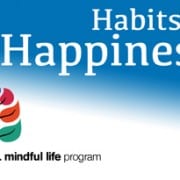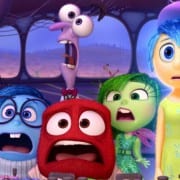The Problem of Being Delusional
If we take a moment to truly examine our lives accurately, we will find that nearly all of our worries and stresses are actually unnecessary. In fact, we will discover that compared to most of humanity, we get to experience an incredible quality of life that is filled with both opportunity and leisure. We have abundant resources such as food, clothing, electricity, education, healthcare, and running water in our own home. Most of the world’s population do not have access to these resources that we take for granted. We have an incredible amount of leisure time to pursue activities we enjoy, while most other people in the world are simply trying to survive. Yet with all of these resources, time and opportunity, we suffer with increasing levels of stress, anxiety, depression, low self-esteem, high blood pressure, and high degrees of overall dissatisfaction. We have an incredible amount of technology to make our life easier, yet we find it difficult to relax, to be calm, or find contentment and well-being in our own life. Even with deluxe beds that we can customize to just the proper level of firmness, climate control in our own homes to make our environment as comfortable as possible and a myriad of resources to entertain us, it is difficult to find true comfort and inner peace. In our quest for the good life, we wind up needing whole industries dedicated to reducing our stress and mental suffering – the pharmaceutical industry, the mental health industry, massage and relaxation therapies, as well as a growing healthcare industry that deals with the physical symptoms resulting from our stress and poor coping strategies.
How is this possible? We are intelligent people with education, opportunity, and resources and yet we find it difficult to be content, at ease and present in our own lives. The root of the problem is clearly described by Alan Wallace when he explains that we suffer from a mind that is obsessive, compulsive and delusional. Instead of us directing our attention where we like and responding to life with reflective and healthy choices, our mind constantly is dragging our attention from one thought or feeling to another and, all too often, we are simply reacting rather than responding to life. Our mind is obsessive in the sense that it is constantly producing thoughts. We are unable to stop thinking even for a minute. So even when we try to calm our mind and relax, we notice that the mind continues to produce thought after thought over and over again. It’s one thing to be obsessive, but it is also compulsive. The mind does not merely produce thoughts, it compulsively draws our attention away from what we are doing and directs it to the referent of the thoughts. It tells us what to worry about, what to desire, what to be irritated about, etc. Even when we know we have nothing to worry about, the mind will insist there is! We can tell ourselves, “Oh no, that’s not a problem”, and the mind will say, “Oh yes it is”. We can see the difficulty of having a mind that is obsessively thinking and compulsively directing our attention to the thoughts and the stories it’s creating. Unfortunately, it gets worse, our mind is overwhelmed with delusion. The thoughts and stories, worries and fears the mind is obsessively and compulsively telling us is rarely based in reality. Essentially this is the crux of the problem, we have a very distracted mind and it spends most of its time in a world that doesn’t correspond with reality.
Our mind lives in a world that believes that if we exercise and eat right we will be healthy and live long, if we maintain our car it won’t break down, that if we get just the right job we will have it made, and that if meet the right person, we will live happily ever after and find lasting happiness. While these are admirable goals and a valuable way to participate in life, unfortunately that world does not exist. Because we have such unrealistic expectations we are often ill-prepared for the realities of life.
In truth, life is messy. People get sick even if they exercise and eat healthy, cars break down, relationships are not perfect, they require effort and compromise, and no matter how good they are, at some point they will end. In the real world, fatal diseases are common, jobs come and go, accidents happen, injuries happen, traffic happens, recessions happen, and even the government shuts down from time to time. The amazing thing is that even though we see this every day, for some reason our mind believes that it should not happen to us. There is a whole industry built on the principle of cars breaking down. It is called the automotive repair industry. Yet we are constantly surprised and frustrated when our car breaks down. We see hospitals, medical clinics and cancer centers, but we surprised and often devastated when we, or our loved ones, get sick. This same phenomenon applies to getting stuck in traffic, a flight getting delayed, luggage getting lost, laid off from a job, canceled vacation, loss of a relationship, our children not getting good grades or getting in trouble. We know they happen but still don’t expect them to happen to us, causing a reaction that adds to our suffering. These are just a few examples, but you can see how this phenomenon applies to nearly every facet of our lives.
When we really take a moment to reflect, we will see that nearly all of our mental sufferings such as anger, resentment, jealousy, depression, stress, low self-esteem, etc., have no other source but our own mind. As Venerable Pema Chodron states, “It isn’t the things that happen to us in our lives that make us suffer, it’s how we relate to the things that happen to us that makes us suffer.” Unfortunately, we usually relate to people and events in our life in unrealistic ways. Let’s look at two ways of relating to finding out that our car won’t start:
Delusional and reactive – We think our car should not break down. We become angry, upset or panicked, quickly calling to mind our bad luck and asking why now? Our mind presents us with how terrible this is, possibly looking for who to blame such as our mechanic, our partner or the car company, how inconvenient this is, how much money this could cost and what a bad day this has turned out to be. Eventually, we do make an alternative plan to get where were going and have the car fixed. However, we carry our frustration and perceived bad luck throughout our day, sharing it with our friends.
Realistic and responsive – Understanding that it is natural that cars sometimes don’t start, after a moment of surprise, we accept and assess the situation and move into solution mode. We get a jumpstart or other needed help and make an alternate plan to get where we are going. We then make a plan to get the car fixed. Instead of asking, “Why me?” and thinking of our bad luck, we find that it is more realistic to be grateful that we have a car when so many don’t and a place to go when so many do not. Instead of letting this ruin our day, it reminds us of our resources and friends that can help us.
In both of the above cases, the event is the same but the outcomes and level of suffering are very different based upon the attitude one brings to the situation. It is a very common practice and complete misunderstanding to blame the source of our mental and emotional suffering on other people, events or things. However, the true source is our own mind that lives in an unrealistic world and wants things to be different than they are. When we investigate the root of our sufferings it is inevitable that we will discover at least one of three primary delusional activities at work; our mind is constantly trying to find lasting happiness in things and people that cannot provide it, trying to find permanence in things that are constantly changing, and grasping on to a misperception of self and others.
The good news is that we can tame our unruly mind, cultivate wisdom and learn to cultivate genuine happiness as we live in the real world. We do this by learning to live mindfully.
Mindfulness is much more than present moment awareness, mindfulness includes and facilitates the cultivation of concentration, wisdom, and the ability to make healthy choices that foster genuine happiness and a meaningful life.
The tools of mindfulness empower us to be aware of our thoughts, feelings and the environment with clarity and discernment. It enables us to recognize healthy tendencies from unhealthy tendencies, harmful habits from beneficial habits, delusional grasping from clear understanding, and be able to make choices that are in alignment with our values, healthy, beneficial and meaningful. In doing so, we cultivate inner peace, genuine happiness and a meaningful life.
© 2015 Mindful Life Program Inc




 Altruism: The Power of Compassion to Change Yourself and the World (Little, Brown, 2015).” width=”170″ height=”255″> This essay was adapted from Matthieu Ricard’s new book,Altruism: The Power of Compassion to Change Yourself and the World (Little, Brown, 2015).
Altruism: The Power of Compassion to Change Yourself and the World (Little, Brown, 2015).” width=”170″ height=”255″> This essay was adapted from Matthieu Ricard’s new book,Altruism: The Power of Compassion to Change Yourself and the World (Little, Brown, 2015).


